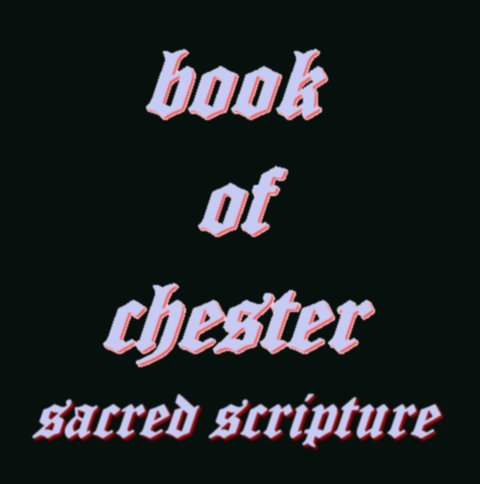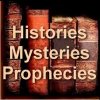
Introduction
Preface Second Ed.
Preface Third Ed.
Note by the Editor
The Two Systems
Trinity in Unity
Mother and Child
The Child in Assyria
The Child in Egypt
The Child in Greece
Death of the Child
Deification of the Child
Mother of the Child
Christmas
Easter
Nativity of John
Feast of thr Assumption
Baptismal Regeneration
Justification by Works
Sacrifice of the Mass
Extreme Unction
Purgatory and Prayers for the Dead.
Idol Processions
Relic Worship.
Clothing and Crowning of Images.
The Rosary
Lamps & Wax-candles
Sign of the Cross
Sovereign Pontiff
Priests, Monks, and Nuns.
Great Red Dragon
Beast From the Sea
Beast from the Earth
Image of the Beast
Number of the Beast
Invisible Head of the Papacy
Woman with Golden Cup
Hebrew Chronology
Shing Moo and Ma Tsoopo of China.
Ala-Mahozim
Meaning of the name Centaurus
Olenos, the Sin-Bearer
Identification of Rhea or Cybele and Venus
Virgin Mother of Paganism
Goddess Mother as a Habitation.
Meaning of the name Astarte.
Oannes and Souro
The Identity of the Scandinavian Odin and Adon of Babylon
Stripping of the Clothes of the Initiated in the Mysteries
Zoroaster, the Head of the Fire-Worshippers
Story of Phaethon
Roman Imperial Standard of the Dragon of Symbol of Fire-worship
The Slaying of the Witness
Attes, the Sinner
Click here for The Reluctant Messenger (Host Site)
APPENDIX - The Identification of Rhea or Cybele and Venus.
NOTE G, p. 75. The Identification of Rhea or Cybele and Venus.
In the exoteric doctrine of Greece and Rome, the characters of Cybele, the mother of the gods, and of Venus, the goddess of love, are generally very distinct, insomuch that some minds may perhaps find no slight difficulty in regard to the identification of these two divinities. But that difficulty will disappear, if the fundamental principle of the Mysteries be borne in mind--viz, that at bottom they recognised only Adad, "The One God" (see ante, pp. 14, 15, 16, Note). Adad being Triune, this left room, when the Babylonian Mystery of Iniquity took shape, for three different FORMS of divinity--the father, the mother, and the son; but all the multiform divinities with which the Pagan world abounded, whatever diversities there were among them, were resolved substantially into so many manifestations of one or other of these divine persons, or rather of two, for the first person was generally in the background. We have distinct evidence that this was the case. Apuleius tells us (vol. i. pp. 995, 996), that when he was initiated, the goddess Isis revealed herself to him as "The first of the celestials, and the uniform manifestation of the gods and goddesses.... WHOSE ONE SOLE DIVINITY the whole orb of the earth venerated, and under a manifold form, with different rites, and under a variety of appellations;" and going over many of these appellations, she declares herself to be at once "Pessinuntica, the mother of the gods [i.e. Cybele], and Paphian Venus" (Ibid. p. 997). Now, as this was the case in the later ages of the Mysteries, so it must have been the case from the very beginning; because they SET OUT, and necessarily set out, with the doctrine of the UNITY of the Godhead. This, of course, would give rise to no little absurdity and inconsistency in the very nature of the case. Both Wilkinson and Bunsen, to get rid of the inconsistencies they have met with in the Egyptian system, have found it necessary to have recourse to substantially the same explanation as I have done. Thus we find Wilkinson saying: "I have stated that Amun-re and other gods took the form of different deities, which, though it appears at first sight to present some difficulty, may readily be accounted for when we consider that each of those whose figures or emblems were adopted, was only an EMANATION, or deified attribute of the SAME GREAT BEING to whom they ascribed various characters, according to the several offices he was supposed to perform" (WILKINSON, vol. iv. p. 245). The statement of Bunsen is to the same effect, and it is this: "Upon these premises, we think ourselves justified in concluding that the two series of gods were originally identical, and that, in the GREAT PAIR of gods, all these attributes were concentrated, from the development of which, in various personifications, that mythological system sprang up which we have been already considering" (BUNSEN, vol. i. p. 418).
The bearing of all this upon the question of the identification of Cybele and Astarte, or Venus, is important. Fundamentally, there was but one goddess--the Holy Spirit, represented as female, when the distinction of sex was wickedly ascribed in the Godhead, through a perversion of the great Scripture idea, that all the children of God are at once begotten of the Father, and born of the Spirit; and under this idea, the Spirit of God, as Mother, was represented under the form of a dove, in memory of the fact that that Spirit, at the creation, "fluttered"--for so, as I have observed, is the exact meaning of the term in Gen. i. 2--"on the face of the waters." This goddess, then, was called Ops, "the flutterer," or Juno, "The Dove," or Khubele, "The binder with cords," which last title had reference to "the bands of love, the cords of a man" (called in Hosea xi. 4, "Khubeli Adam"), with which not only does God continually, by His providential goodness, draw men unto Himself, but with which our first parent Adam, through the Spirit's indwelling, while the covenant of Eden was unbroken, was sweetly bound to God. This theme is minutely dwelt on in Pagan story, and the evidence is very abundant; but I cannot enter upon it here. Let this only be noticed, however, that the Romans joined the two terms Juno and Khubele-or, as it is commonly pronounced, Cybele--together; and on certain occasions invoked their supreme goddess, under the name of Juno Covella-(see STANLEY's philosophy, p. 1055)--that is, "The dove that binds with cords." In STATIUS (lib. v. Sylv. 1, v. 222, apud BRYANT, vol. iii. p. 325), the name of the great goddess occurs as Cybele-
"Italo gemitus Almone CybelePonit, et Idaeos jam non reminiscitur names."If the reader looks, in Layard, at the triune emblem of the supreme Assyrian divinity, he will see this very idea visibly embodied. There the wings and tail of the dove have two bands associated with them instead of feet (LAYARD's Nineveh and its Remains, vol. ii. p. 418; see also accompanying woodcut , from BRYANT, vol. ii. p. 216; and KITTO's Bib. Cyclop., vol. i. p. 425).
In reference to events after the Fall, Cybele got a new idea attached to her name. Khubel signifies not only to "bind with cords," but also "to travail in birth;" and therefore Cybele appeared as the "Mother of the gods," by whom all God's children must be born anew or regenerated. But, for this purpose, it was held indispensable that there should be a union in the first instance with Rheia, "The gazer," the human "mother of gods and men," that the ruin she had introduced might be remedied. Hence the identification of Cybele and Rheia, which in all the Pantheons are declared to be only two different names of the same goddess (see LEMPRIERE'S Classical Dictionary, sub voce), though, as we have seen, these goddesses were in reality entirely distinct. This same principle was applied to all the other deified mothers. They were deified only through the supposed miraculous identification with them of Juno or Cybele--in other words, of the Holy Spirit of God. Each of these mothers had her own legend, and had special worship suited thereto; but, as in all cases, she was held to be an incarnation of the one spirit of God, as the great Mother of all, the attributes of that one Spirit were always pre-supposed as belonging to her. This, then, was the case with the goddess recognised as Astarte or Venus, as well as with Rhea. Though there were points of difference between Cybele or Rhea, and AStarte or Mylitta, the Assyrian Venus, Layard shows that there were also distinct points of contact between them. Cybele or Rhea was remarkable for her turreted crown. Mylitta, or Astarte, was represented with a similar crown (LAYARD'S Nineveh, vol. ii. p. 456). Cybele, or Rhea, was drawn by lions; Mylitta, or Astarte, was represented as standing on a lion (Ibid). The worship of Mylitta, or Astarte, was a mass of moral pollution (HERODOT., lib. i. cap. 199, p. 92). The worship of Cybele, under the name of Terra, was the same (AUGUSTINE, De Cavitate, lib. vi. cap. 8, tom. ix., p. 203).
The first deified woman was no doubt Semiramis, as the first deified man was her husband. But it is evident that it was some time after the Mysteries began that this deification took place; for it was not till after Semiramis was dead that she was exalted to divinity, and worshipped under the form of a dove. When, however, the Mysteries were originally concocted, the deeds of Eve, who, through her connection with the serpent, brought forth death, must necessarily have occupied a place; for the Mystery of sin and death lies at the very foundation of all religion, and in the age of Semiramis and Nimrod, and Shem and Ham, all men must have been well acquainted with the facts of the Fall. At first the sin of Eve may have been admitted in all its sinfulness (otherwise men generally would have been shocked, especially when the general conscience had been quickened through the zeal of Shem); but when a woman was to be deified, the shape that the mystic story came to assume shows that that sin was softened, yea, that it changed its very character, and that by a perversion of the name given to Eve, as "the mother of all living ones," that is, all the regenerate (see Note I), she was glorified as the authoress of spiritual life, and, under the very name Rhea, was recognised as the mother of the gods. Now, those who had the working of the Mystery of Iniquity did not find it very difficult to show that this name Rhea, originally appropriate to the mother of mankind, was hardly less appropriate for her who was the actual mother of the gods, that is, of all the deified mortals. Rhea, in the active sense, signifies "the Gazing woman," but in the passive it signifies "The woman gazed at," that is, "The beauty," * and thus, under one and the same term, the mother of mankind and the mother of the Pagan gods, that is, Semiramis, were amalgamated; insomuch, that now, as is well known, Rhea is currently recognised as the "Mother of gods and men" (HESIOD, Theogon., v. 453, p. 36). It is not wonderful, therefore, that the name Rhea is found applied to her, who, by the Assyrians, was worshipped in the very character of Astarte or Venus.
Previous | Next
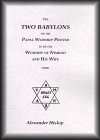
or The Papal Worship Proved to be the Worship of Nimrod and His Wife
$3.99 Kindle eBook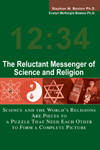
Buy from Amazon.com
The Essential Teachings of Herbert W. Armstrong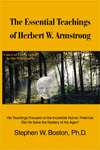
His Teachings Focused on The Incredible Human Potential. Did He Solve the Mystery of the Ages?
New Book about HWA's Teachings. Recommended!

